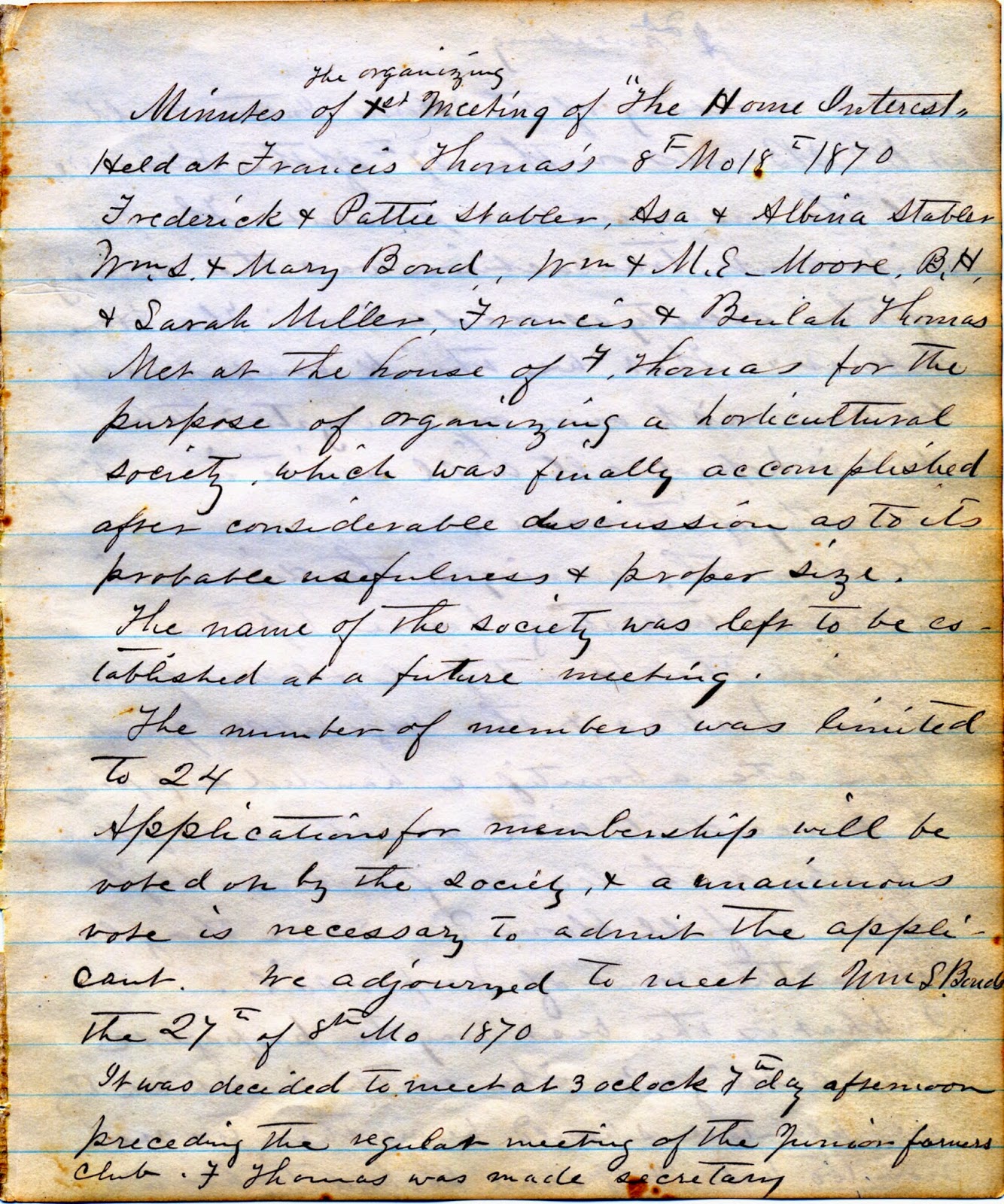I met with the museum staff recently about moving forward with the research and starting the exhibit planning phase. They've helped me regroup. I am grateful for their guidance. Previously, I was looking thru individual boxes of artifacts starting from those earliest accessioned into the collections (1981). It's been a slow way to work, yet a quarter of the way thru it's given me a good feel for the archive collection. The archivist has committed to pulling documents and photographs from e-mailed requests now that I've got specific fabric pieces that I'm designing. I have finally narrowed my focus beyond a general timeline. This is great news!
At the end of March, I sent in my first request list. I'd found a photocopy of the Home Improvement Society showing women in old fashioned garb sitting in a room with a few sewing machines. It intrigued me as a sewer. I also wondered if this was part of the early organizing that led to the Women's Rights Movement. Bingo! I was provided with several newspaper articles and photos that I'd requested based on the collection catalogs. In addition, the new archivist presented me with a vertical file of materials collected about the society. On top of that, I received a box including all of the early minutes from the society. Wow! I suspect that the society's notes would be the basis of a very interesting exhibit. I was able to hold the first notebook of minutes from 1870 in my white gloved hands. It was an honor to look into that time capsule. In terms of surface design, the handwritten pages were fabulous.
It was delightful to discover that the society is still meeting today. The archivist was recently invited to attend the next meeting of the society. What an amazing coincidence... I was disconcerted to find that the Home Improvement society was actually organized by six married couples with an interest in horticulture in 1870. This clashed with the notes on the Mutual Improvement Society being founded in 1857. What about the photo above that references the Women's Association? The newspaper articles indicated that the Mutual Improvement Society was the oldest women's organization in America. Are we talking about two or three different groups? I've found a number of names that overlap. It was all tucked together in one vertical file. Hmmm...I guess history isn't always clean cut.
Either way, it was fascinating that the Quaker model was responsible for the ability of the local women to organize. It wasn't seemly for women in the 1800's to hold office. A woman couldn't be a president or a treasurer. However, Quaker meetings held individuals as equal in status with a single clerk voted on to guide the meeting. This allowed Sandy Spring's women to be in the forefront of social progress.





No comments:
Post a Comment